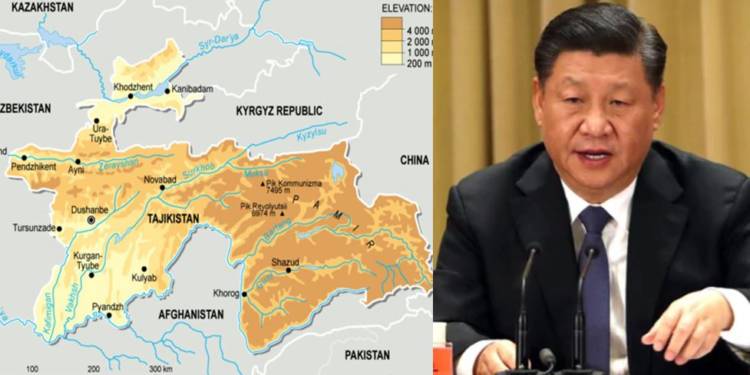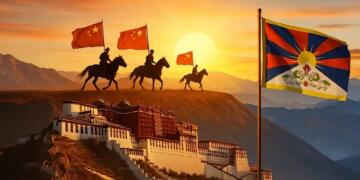China’s salami-slicing tactic has a new victim- Tajikistan, the smallest Central Asian country. As per the recent reports, China has claimed the Pamir region of Tajikistan that accounts for 45 per cent of Tajik territory. In line with its modus operandi to stake a claim on foreign territories, Beijing has started with historical revisionism.
As a matter of fact, Central Asia is a region of Chinese influence. But, the latest bid to claim almost half of Tajikistan might end up antagonising Central Asia against China. Moreover, the Sino-Russian “axis of convenience” is again being put to test with the latest round of Chinese expansionism.
Recently, official Chinese outlets relentlessly republished an article written by a Chinese historian, Cho Yao Lu, several times. The provocative article titled “Tajikistan Initiated the Transfer to China of Its Land and the Lost Mountains of the Pamir Were Returned to Their True Master.” This article claims that the entire Pamir region was once part of China, but it lost these territories in the 19th century due to pressure from the UK and Russia.
Yao Lu also states that China was able to reclaim a part of the Pamir region in 2010. He is here referring to a 2011 deal wherein a debt-ridden Tajikistan had to lose 1,158 square kilometres of its ‘disputed’ territory to China. Beijing had then persuaded a debt-trapped Dushanbe, to cede a part of its territory. Now, China wants to use its infamous debt-trap diplomacy to usurp almost half of the landlocked country.
Although, China has not officially staked a claim on the entire Pamir region, but, this is how Beijing’s expansionism starts. A random CCP-sponsored historian writes about China’s “historical” claims in foreign territories and how Beijing had to relinquish its territory several centuries ago. The Chinese wolf-warriors start picking up such tendentious historical fiction and ultimately the Middle Kingdom starts bullying its neighbours.
Dushanbe also understands how China goes about its salami-slicing tactics and has demanded that Beijing renounces the objectionable article. This is at odds with the general ‘China-friendly’ Tajik’s policy.
Central Asia doesn’t have much of a choice when it comes to China, as most of the bigger powers like the US and the EU haven’t shown much interest in this part of the world. Besides, Russia also doesn’t have the economic firepower to match Chinese investments in this region and Tajikistan itself is crippled by Chinese debt. Dushanbe owes Beijing 1.2 US billion dollars in debt out of its total foreign debt of 2.9 million US dollars.
But, with China threatening to take away almost half of its territory, Tajikistan feels compelled to speak up and demand that China stops sponsoring the revisionist article written by Cho Yao Lu.
Meanwhile, the Russian media outlets also seem to have got angered with the initial indications of Chinese belligerence. Moscow still views Central Asia as its “exclusive sphere of influence“. The five Central Asian Republics, including Tajikistan, were a part of Eurasia and formed constituents of the erstwhile Soviet Union. Therefore, Russia is perturbed by the thought of China eating into the Russian space.
Russian outlets have therefore sharply criticised China and have also suggested that Beijing could be testing the waters for potential future border disputes. Both Dushanbe and Moscow seem to understand that the Chinese investments in Tajikistan’s Pamir region, in the form of border posts, airports and gold mining, are a part of its attempts to dilute Tajik sovereignty in this region.
With this latest bid to aver almost half of Tajikistan, Beijing’s expansionism has spread its tentacles into Central Asia. The Central Asian countries must now understand the perils of Chinese investment and Xi Jinping’s flagship Belt and Road Initiative (BRI).
As such, the Western powers including the US must also rise to the China challenge in Central Asia. The five Central Asian Republics might seem to be geopolitically irrelevant, but if territorial concessions are made in the Pamir region, China would occupy a towering position in this part of Eurasia and consequently exercise influence in neighbouring Afghanistan also, where American troops are stationed.
With Chinese expansionism spreading into Central Asia, it is becoming amply clear that China wants more and more territory in all directions in the Asian Continent. The democratic world must corner it from all sides so that China doesn’t become even more gigantic than what it already is.


































